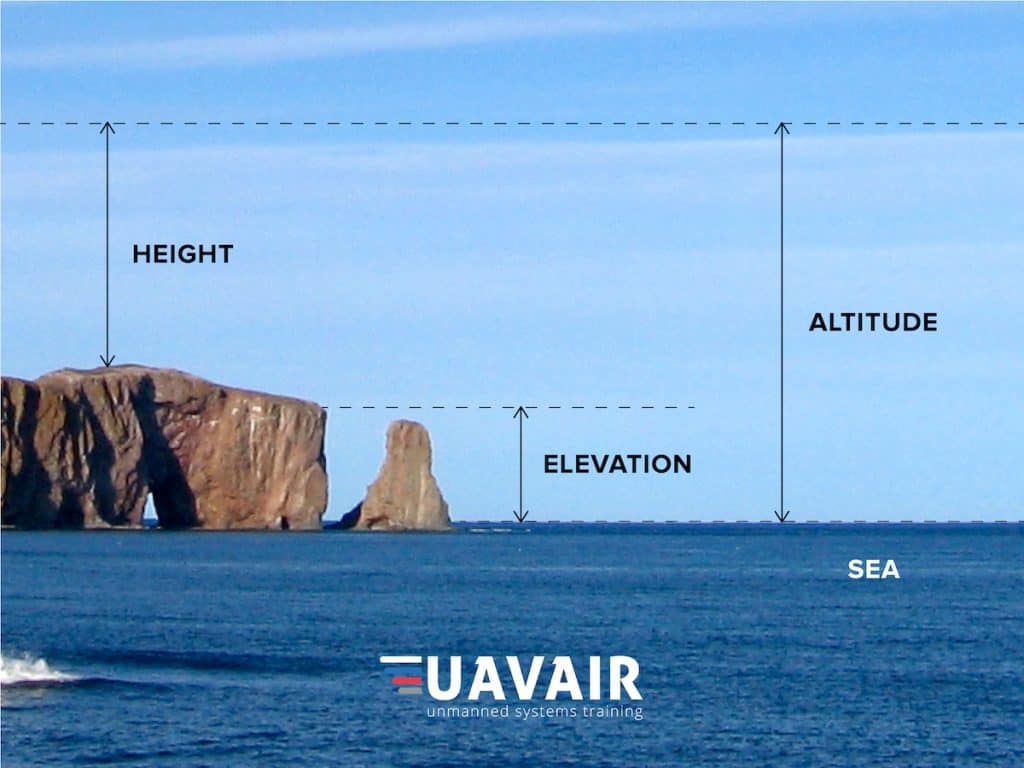Or is it Altitude?
A lot of people get confused over what the true understanding of how a drone measures height.
When a drone is turned on by its operator, the Inertial Measurement Unit (IMU) does a calibration of three things including gyro, accelerometer and barometer. The drone takes a barometric pressure reading of field elevation (known in the aviation world as Query Field Elevation or QFE) and sets zero height.
With drones, when we measure height, this is taking Above Ground Level (AGL). This is different to Above Mean Sea Level (AMSL) known in the aviation world as Query Nil Height (QNH).
When a pilot jumps into an aircraft at the local airport, they will need to manually set the altimeter to read the correct QNH or barometric pressure above mean sea level to ensure they will be flying at the same reported levels as every other pilot, unlike the drone that automatically sets its own QFE.
So what does this all mean? There is a disconnect between the way unmanned and manned aircraft measure how high they are flying above the earth. Unmanned aircraft fly above ground level (height), and manned fly above mean sea level (altitude), as the picture shows, the disconnect is the earth elevation from where the drone takes off. A classic example of this was highlighted recently when a near missed was reported by a helicopter pilot flying along the coastline off Coogee in Sydney when the drone was reportedly came within 3m or 10 feet of the helicopter.
The helicopter was flying at 152m or 500 feet, and it’s important to remember that aircraft’s attitude is read as above mean sea level. The drone on the other hand, if it was within 3m or 10 feet of the helicopter would have been flying at 149m or 490 feet. The big question here being, what was the elevation it took off from? That we simply don’t know, but could be assumed to be as low as 27m or 90 feet.
Those drone operator that have their Remote Pilots Licence (RePL) with their Aeronautical Radio Operators Certificate (AROC) need to be aware when talking to pilots, to highlight their position and that they’re flying above ground level, otherwise the manned aircraft pilot may incorrectly assume the drones altitude to be above mean sea level.
Drones pilots need to be aware of their elevation as part of their pre-flight planning. In knowing this, you’ll have a greater appreciation of knowing not only the height that your drone is flying, but also your altitude that your drone is flying. This will improve your understanding of the altitude that manned aircraft are flying around you at in relation to your drone operation.
We at UAVAIR pride ourselves on being industry leaders in RPAS training and education. As a Registered Training Organisation we offer a Certificate III in Aviation (Remote Pilot – Visual Line of Sight) course. This course consists of two weeks of online learning and seven days of face to face training. We also send our students out a microdrone to practise their skills and log some flight time before attending our course. Our Certificate III course also includes a Remote Pilot License and Aeronautical Radio Operators Certificate.
We also run several other courses including Flight Foundations, Foundations of Aerial Surveying and Sub 25kg Type Training.
If you are interested in completing training with UAVAIR you can get in touch with one of our team on 1300 893 340 or via uavair.com.au
